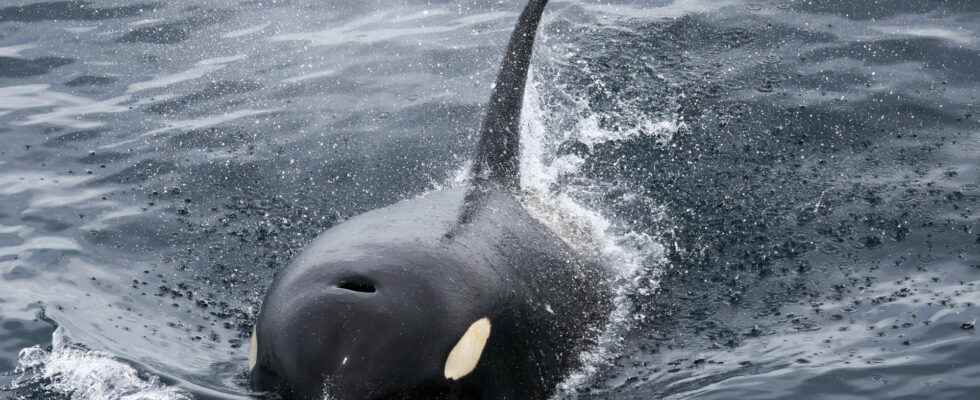In recent months, attacks on small boats by killer whales have multiplied. A phenomenon that scientists are struggling to interpret.
The terrifying scene took place at the beginning of August, 170 km off the coast of Brest. Ester Kristine Størkson, a 27-year-old medical student, and her father sail peacefully aboard a small sailboat. Leaving from Norway, their country of origin, they are heading for Madeira, a long journey but a simple stopover for these two experienced sailors who are determined to sail around the world in their Malö 37, which is around twelve meters long. As she dozes, Ester is awakened by a huge shock against the hull, followed by several other equally violent ones.
The young woman and her father quickly take stock of the situation and the danger that threatens them: a group of killer whales has decided to attack their boat. They are five, including a very young one, quite numerous and powerful enough to sink their boat. The assault is incredibly violent: the killer whales manage to turn the ship 180 degrees. “They were hitting with regularity, it really felt like it was a coordinated attack,” says Ester on her Facebook page. She is on the verge of a panic attack: “I told my father: ‘I can’t think clearly anymore, so you have to think for me.’ Fortunately, he is a very calm and focused person. He reassured me by talking to me calmly about our situation.
The assault lasted a quarter of an hour
The duo immediately apply the recommended instructions in this exceptional but not unprecedented type of event: they cut off the sonar, suspected of disturbing the cetaceans and making them aggressive, they reduce the genoa, the sail in front of the boat, and try to lock the rudder in the middle position. But the killer whales go after each side of the rudder, which they reduce to lint. The assault lasts a quarter of an hour, probably the longest minutes of their lives. Then, as suddenly as they arrived, the orcas leave, leaving father and daughter shocked but relieved. They submerge a Gopro camera to inspect the damage. The rudder was seriously damaged but the hull held up and they were able to navigate as best they could to Brest to repair their sailboat.
But the end of this story could have been more tragic: a few weeks earlier, two small ships were sunk by killer whales off Portugal. The passengers were fortunately able to be rescued in time. Why these attacks worthy of a commando operation? The specialists of these cetaceans wonder. Until now, they considered that only a handful of orcas particularly mounted, were at the origin of all “encounters”, the term that scientists prefer to that of attack. But, concedes Renaud de Stephanis to npr.org, president and coordinator of CIRCE, a cetacean research group based in Spain: it is highly unlikely that the same animals were responsible for the incidents in Portugal and the assault on the Størksons’ boat.
The leads to explain these behaviors are still not very solid. One of them is surprising: scientists hypothesize that killer whales like the water pressure produced by the propeller of a boat. “We think they love to feel the ripples caused by the propeller in their muzzle,” explains Renaud de Stephanis. Also, when they encounter a sailboat whose engine is not running, they are a little frustrated and take revenge on the rudder. An explanation supported by Jared Towers, director of Bay Cetology, a research organization in British Columbia: “There is something … that seems to stimulate them,” he says.
In reality, these terrifying attacks could be just a game played by a few rambunctious juvenile males, says Jared Towers: “These games sometimes impose themselves for a while before disappearing. Orc society operates very much by fashion. For example, in the 90s, killer whales had fun killing fish and swimming with their victim on their head… It amused them for a while and then they moved on.
